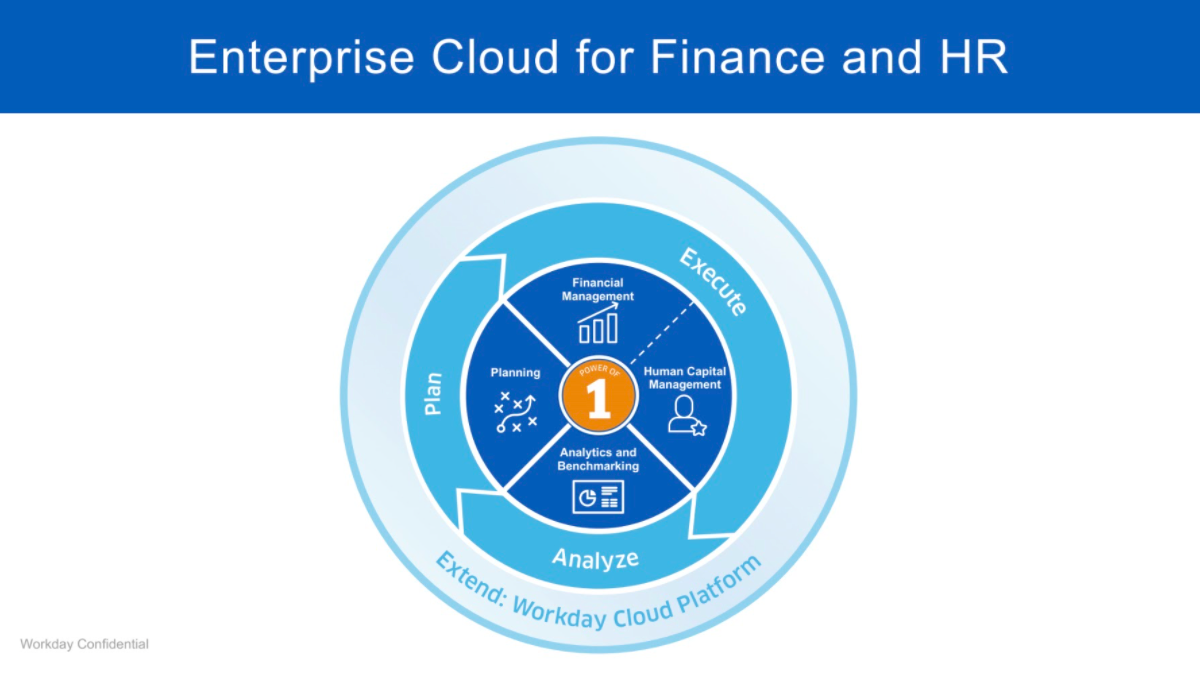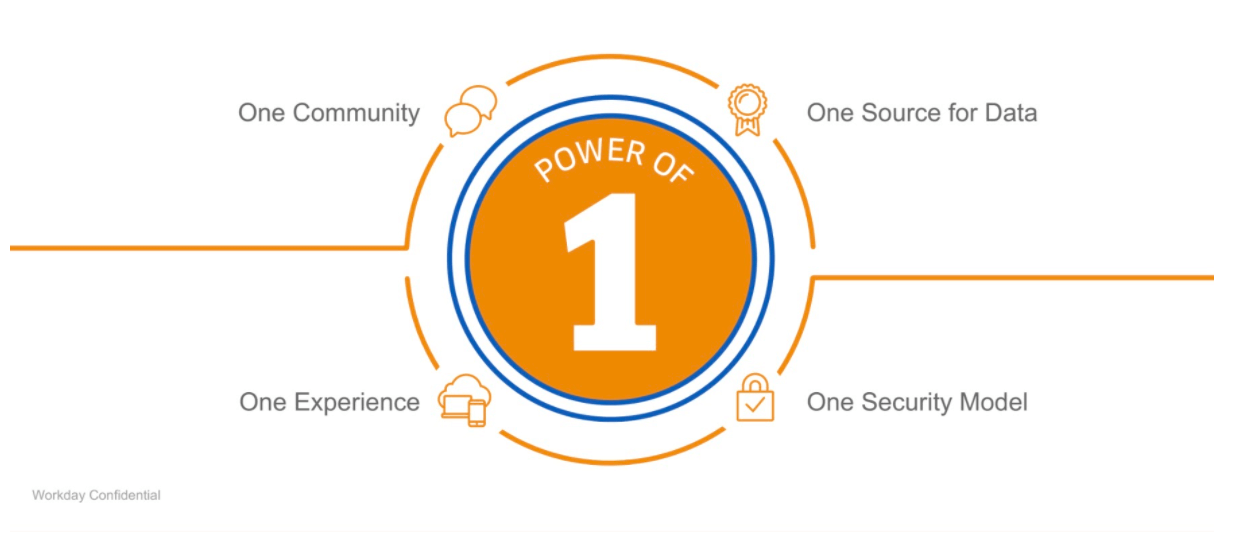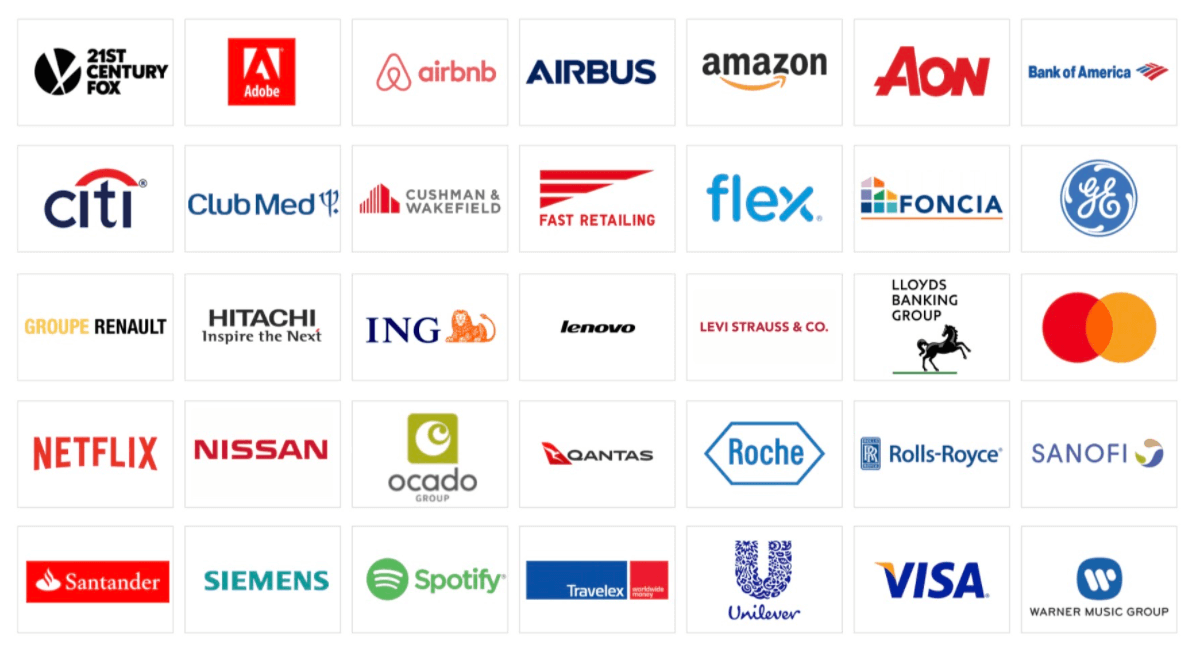In this article, I’ll discuss outbound product marketing and explain what it involves and how it’s different from the traditional Product Marketing Manager (PMM) role. I’ll explain how the outbound PMM function at Workday is organized and what’s within our remit, and examples of what we’ve done to elevate the function.
My name's Richard Doherty, I am Senior Director of Product Marketing at Workday. I'll explain a little bit about Workday in a minute. But first, I want to give you a bit of my background.
In this article, I'll be discussing:
- What we do at Workday
- Outbound product marketing
- Examples of what we've done
- How we provide support for companies
About me
I think it's interesting that a lot of people I speak to in PMM sort of fall into being a product marketer and that's exactly what's happened to me.
I've always worked in B2B software, apart from my very first job, which was as a graduate trainee in the IT department of Safeway stores, which doesn't exist anymore. It's a big supermarket. I was a MVS systems programmer if anyone knows what that is (I'm really old now).
Essentially it's systems programming on old mainframes. That's where I started out.
I've done training and support in software companies, I've done consulting, implementations, I've been a salesperson for two years - a quota carrying salesperson. I ran marketing in a company called Jobpartners, that sounds quite grand but it was basically me, it was a startup.
Frankly, we didn't do much marketing, because I didn't really know what I was doing. That company I was with for 11 years from the very beginning to when we sold it to the US market leader at the time, Taleo, which was then bought nine months later by another big US technology company called Oracle.
I've been at Workday for just under five years. Let me introduce Workday to you.
About Workday
We are an enterprise cloud solution provider, we're best known for our HR solutions. That's where we started out. HCM as it's called, human capital management, is about managing employee records, payroll, timesheets, talent management, performance management, compensation review, learning, recruiting.
It's the broad management of employees and we've been extremely successful. Lesser known is we also provide financial management solutions, and that's a massive growth area for us at the moment that's fuelling our growth currently.
More recently, we've added on analytics capabilities because all that financial and people data provides insight to organizations that helps them make better business and strategic decisions.
We've also acquired about 18 months ago a planning software company called Adaptive Insights, which by plugging in that missing piece of the puzzle allows us to help our customers, what we call plan, execute, and analyze in more rapid cycles than ever before, which is all linked to the necessity for organizations to be agile.

In the old days, you'd have a planning cycle for maybe a year, maybe 18 months, maybe 24 months. You'd create the plan as a business, which is "We're going to sell these products to these markets", you'd execute on that plan, and then maybe a year later, you'd analyze the results of that plan. Maybe if it's not working out so well, you'd change direction.
You can't operate like that anymore, you would go out of business. We see lots of examples of organizations doing just that. You need to be able to do that cycle much, much faster.
Workday itself was founded in 2005, it was a very disruptive company and we continue to be a very disruptive company, as we were entering a very established market, with very established very strong, very large, very cash-rich incumbents, who we still compete with to this day.
When I joined the company five years ago, it had about 3,000 employees, we're now at 12,000 employees. We cover in Europe, about 14 countries, for instance looking at Germany, or German office operations weren't there when I joined.
Now, we have over 160 employees there, and lots and lots of customers. We have over 3,000 customers worldwide.
Power of one
One of our key messages is that we talk about the power of one. In the enterprise software market, in the old days, everyone would be running different versions of software, customized, so you'd talk to another organization who are using the same software as you and it's not, it's completely different.
Whereas with Workday, everyone's using the same software, it's a single code line. Like when you log into LinkedIn, you're using the same version of LinkedIn as me, it's the same with our software, it's just been configured differently to match the organization's different needs.

That multi-tenant SaaS, as you will know, gives you the benefit of lower support costs, being able to roll out more innovation faster, and so on. For our customers, it means if they go for the full platform, such as human capital management, financial management, analytics, planning, they have all of that data in one place, all secured by a single security model.
Because all of that data's in one place, they can generate more insight than ever before.
People at the center of enterprise software
We've approached things very differently and we focus on different things to our primary competitors. We focus a lot on customer satisfaction, we measure it, we have a minimum target of 95% customer satisfaction, that's measured through a survey and responses from those surveys.
We all get a few shares every year if we get above 95%.
Our software, it's not what's called shelfware, people don't just buy it and put it on the shelf and never implement it or spend years trying to implement it.
They buy it, they implement it quickly, they go live. 70% are live, the other 30% are in implementation.
A great place to work
Another big thing about Workday is it’s a great place to work. We have a number of values and that top value is to look after your employees because the philosophy is you look after your employees, then they'll look after your customers.
And it is a great place to work and we've been ranked the best place to work in the UK for our size of organization, the best place to work for women, the best place to work for minorities, all these sorts of things. We rank in all of those lists.
Our customers
We have fantastic customers. Netflix is a fantastic customer. Amazon - they're gearing up to a million employees. More established organizations like Rolls Royce, Lloyds Banking Group.

I'll tell you a story about Lloyds Banking Group.
Lloyds Banking Group - a story
I'm just changing cars, the finance on my old car is finishing so I phoned up the finance company, going through the rigmarole of closing that off and the chap on the phone said: "Oh, I see that you work for Workday".
I was like oh, this is a bit weird, "Yeah". And he said, "It's fantastic. It's made my working life so much better". He worked for a part of Lloyds Banking Group.
In my previous companies, I've never had that experience before. The way in which we engage our customers, the way in which we look after our customers, is something from a product marketing perspective we look to leverage.
Outbound Product Marketing
The whole hypothesis behind this is if you're not in the HQ function, if you're not based in the HQ, wherever that may be, if you're in a different country, then your role as a product marketer is going to be significantly different to those people who are based at HQ.
That can be a challenge to make people understand why it's different, and how it's different.
How are we organized?
How are we organized at Workday from a product marketing perspective?
When I joined, there was no product marketing outside of North America. Now, we have a small footprint there, and I'll talk about that in a moment. But we have about 48 in the product marketing function.
Majority US
All but four of those 48 are based in North America and the majority of those would be based in Pleasanton, which is in California, where our head office is, although they have some remote workers as well, but based in the US.
So the great majority of our product marketers are based in the US. We have four over here, two in the UK, one in France, and one in Germany, and that's the team I recruited and built out.
By skew
We are organized in the US by functional area. We have our HCM, human capital management, product marketers, and they are organized by what we call skew. So products that we sell.
We would have what's called core HCM, recruiting, learning, time tracking, payroll, and each of those skews will have one or two product marketing managers depending upon the scale of that business for us.
Broader remit in the UK
Over here in the UK, we have a broader remit. They're very specialized in the US, whereas over here we're broader, for instance, I'm HCM so I try and cover all of the different skews that come underneath the HCM banner.
We've tried different ways of organizing, initially, when I built up the team, we had a local team, local reporting lines, and we reported to the VP of Marketing for EMEA. We felt we were too detached from the corporate product marketing, they kind of forgot about us because we didn't report to them so that was changed.
We then reported into the corporate product marketing, by functional product line and that's where we are at the moment, who knows, we may well change that again.
The pipeline analogy
When we look at corporate product marketing, I like to use the analogy that they're laying the pipelines across Europe, across the world, if you like, and they're determining what flows through those pipelines, the water that flows through their pipelines.
They're pumping the assets, the messaging, the positioning, and so on, that circulate through those pipelines around the world.
The right people in the right place
What we need though, is someone local to know those pipes are there. Because again, before we had local product marketing, a lot of the assets and so on that were being produced out of corporate product marketing, the local markets didn't even really know about them.
People are bombarded with information, with emails, with intranets, and they will just ignore it, it just becomes noise. So you need someone local who can sift through all of those assets, and communicate clearly what's going to be relevant locally.
From an EMEA product marketing perspective, we need people who know that the pipe as it flows through Finland, for instance, you probably want to fit a sauna to that pipe. As it flows through France, national stereotypes, we need to fit a bidet. As we flow through the UK, we just need to fit a tap.
But it's really important we have people locally, in my opinion, who can do that.
We can’t reinvent the wheel
For EMEA product marketing, our role is to amplify those messages coming out of corporate and choose the right ones to amplify across our region and within our countries.
We're only four of us over here and we don't have the capacity to be reinventing the wheel, no matter how beautiful that wheel maybe when we've reinvented it, we just don't have the bandwidth, we can't do that.
What we need to do is take what's coming out of our corporate product marketing function, and either tweak it if it needs a little bit of tweaking or ideally, influence as early as possible as those assets are being created.
Because we had this in the early days, you'd have what we call our product previews, very short demos, two minutes on the website, they drive a huge amount of MQLs for us, they'd come out of the US and they'd be all US data, just wouldn't work here.
If you have to redo the whole product preview, it can take months and cost a fortune. Whereas if you can influence that early, tweak it, see the script, say that's not going to work in Europe, that's not going to work here, could you change it please, then that saves everyone a huge amount of time and money.
Workflow management tool
I think we've made great progress with that over here. We use a tool called Workfront, which is a workflow management tool. So when we're creating a new asset out of corporate, they will now add in the EMEA product marketers as approvers or reviewers at different stages in the process so we know automatically what's going on.
We get visibility in different stages as they're creating ideas for an asset, doing initial drafts, we get to have a look at it and say, "Oh, could you change that because we think it won't work". That's had a massive positive impact on our ability to use those US assets as they are because they're not US assets anymore, they're global assets.
...But sometimes we have to
Having said that, sometimes you do have to invent the wheel. In Europe, it's very diverse, is it not? Europe is not a country. Europe is made up of lots and lots of different countries, and they are very different.
If you want to be successful selling in these different countries, you need to talk about something that's relevant to them. That's my role, I'm annoying, I'm saying, "Have you thought about EMEA? Have you thought about Europe? That's not going to work in the UK, that's not going to work in France".
You become like a broken record but you just have to keep on doing it to make sure the corporate function is aware. Frankly, they're very receptive to it, they just need reminding.
How do we identify what the key topics are in all these different countries? There's no way I can do that. I don't know what's going on in 14 different countries. I don't know what the hot topics are.
Find your canary in the mine
My tactic is you need to find your canary in the mine. The early warning signal. Someone who understands their market and who can warn you early that something's coming up that perhaps we should hang our coat on.
I've got a few of these in Workday, they tend to be sales leaders, they're quite good at giving you a heads up because they're told by their salespeople, the conversations they're having with prospective customers, what the hot topics are.
These are typically the people who will ring you up and tell you how to do your job, how you should do it better, this is what you should be talking about. It can be a little bit annoying but you just swallow your pride and realize that actually, they're providing you with valuable input.
Examples of what we’ve done
Let me give you some examples of some of the things we've done locally because we had to do them locally.
GDPR
This was a really good example. At the beginning of 2017, one of our Nordics sales leaders started saying, "This is coming up, GDPR is coming up time and time again, this is an issue for our customers".
I have to admit I hadn't really come across GDPR at that point. We did some research into it, we went to some GDPR conferences, and we identified that actually, yeah, this is a big deal for organizations in Europe who are managing employee data.
For GDPR, the initial concern was around the consumer brands handling customer data, but we saw actually, GDPR was going to have a massive impact on organizations and the management of their employee data.
Because a lot of organizations had lots of different systems, they didn't have centralized control of that data, a lot of the time, they didn't even know where the employee data was, they couldn't really strictly control who had access to it.
This was potentially going to be a massive issue for these organizations.
What did we do?
The idea was that we needed to start amplifying it as an education that you need to think about. At any size company, you need to think about GDPR, the implications on how you store employee data, who you give access to that data, and so on, and so on.
We gave a vision of actually, you've got all these different systems, you should consolidate those systems into a single system, which gives you clear control over that data, and who can access that data.

We engaged with our product people as well just to understand what are we doing around GDPR? Obviously, they were doing everything, they were building functionality into the product already but the organization hadn't realized this was going to be a key lever for driving new sales.
We also spoke to our chief privacy officer who was working on the contract side because if you're working with a SaaS provider, there was going to be a contractual element over GDPR.
We were already doing all these things, of course, we were, but what we weren't doing was joining all the dots and then going out to the market and broadcasting a message and a narrative around GDPR.
Tackle GDPR with Workday
This was all done out of Europe, we built microsites, we recorded webcasts, datasheets, we built out infographics.
You can see below why organizations will be worried about it, they could get fined up to €20 million or 4% of revenue. That tends to focus the mind.
And an organization like Velux, who do the windows in your loft conversion, a Danish company, specifically moved to Workday to help them address GDPR and make sure they could remain compliant. That's a 20+ country deployment.
Events
We did events as well. That's me on the stage there. That was in the walkie-talkie building at the top, which is a great venue, and we filled it out.
Global competitors using local tactics
As I've mentioned we have a number of very large established competitors, who have got lots of very clever people working for them. They are very clever in terms of the tactics they use locally against Workday.
This has all changed now, this was a few years ago but they would use different tactics depending upon the maturity of the market. By maturity, I mean in terms of the adoption of cloud technologies.
Again, we were getting feedback from the canaries in the mine saying, "Look, this is a problem. We're hitting issues against this competitor, they're telling the customer this, this is the message they're going with and it's really hurting us".
What the competitors were doing was taking our strength and very cleverly turning it into a weakness.
What did we do?
We built out decks the salespeople could use, we enabled them on the decks so we could combat this local tactic, we recorded webinars, we ran events around this topic.
That's something again, you're not going to get out of your corporate function because they're not close enough to the market. We used them to help us create the assets but we drove those campaigns.
Workday Rising
Workday Rising is our annual user conference, there's one in the US, one in Europe. Originally, we just used to lift and shift the US one. Same presenters often, very similar content, and run that. Little things like you'd have baseball analogies in presentations and things like that.
Fast forward five years, we have 3,000 people in Milan, we have track leads for the content who are all European, we review every deck, a couple of years ago we had lots of specific GDPR type content, which they didn't have in the US.
We're shaping that conference to make it more locally relevant. Oh, and we had Michael McIntyre as our keynote speaker and he was very, very funny, very expensive I believe but worth every penny, he had me laughing.
For things like keynote presentations, you can't cover the same content at the same time at a European event, because you need to speak slowly. Little things like that we can bring to the party, and I think the conference is just getting better and better.
Outbound marketing: What do we do?
We're really tied in mainly to marketing at the moment with some sales interactions. We do a lot of event work, that's physical and virtual events, we determine the content, the message, what are we going out with?
We do sales enablement around new releases, new updates, there's a big focus for us at the moment in showcasing the innovation we're going to market with.
We enable partners, we work with a local analyst relations team, we would be the local product experts who would help with those local analyst engagements. The big analyst engagements, like Gartner, and so on are managed out of the US, of course.
How do we organize?
I don't think we've found the best way to organize ourselves yet. I'm still not sure what's the best way to do it.
What do we look for in an outbound product marketer?
I think these are really difficult people to find and we've found them from very diverse backgrounds.
In our team, they are domain experts, marketers second. They know their area, ex accountants, finance technology specialists, they know their area.
You have to be a self-starter, don't get upset if you've forgotten about just bang on the door so they don't forget about you. You're kind of on your own so you've got to be a self-starter.
We want to be disruptive, we don't want to do things in the same old way. Workday was born on a disruptive idea, we want to continue that, we don't want to just get into a cycle of doing the same old thing.
Influential because we're bringing people together who we have no managerial responsibility for, we can't tell people what to do. So we need to be influential people, we need to be credible internally.
Also, we need to be confident to present, we do go around Europe presenting a lot. We need to be creative in terms of the content and we need to be sensitive to our audience, both culturally and from a country perspective.


















 Follow us on LinkedIn
Follow us on LinkedIn




.svg)
Start the conversation
Become a member of Product Marketing Alliance to start commenting.
Sign up now